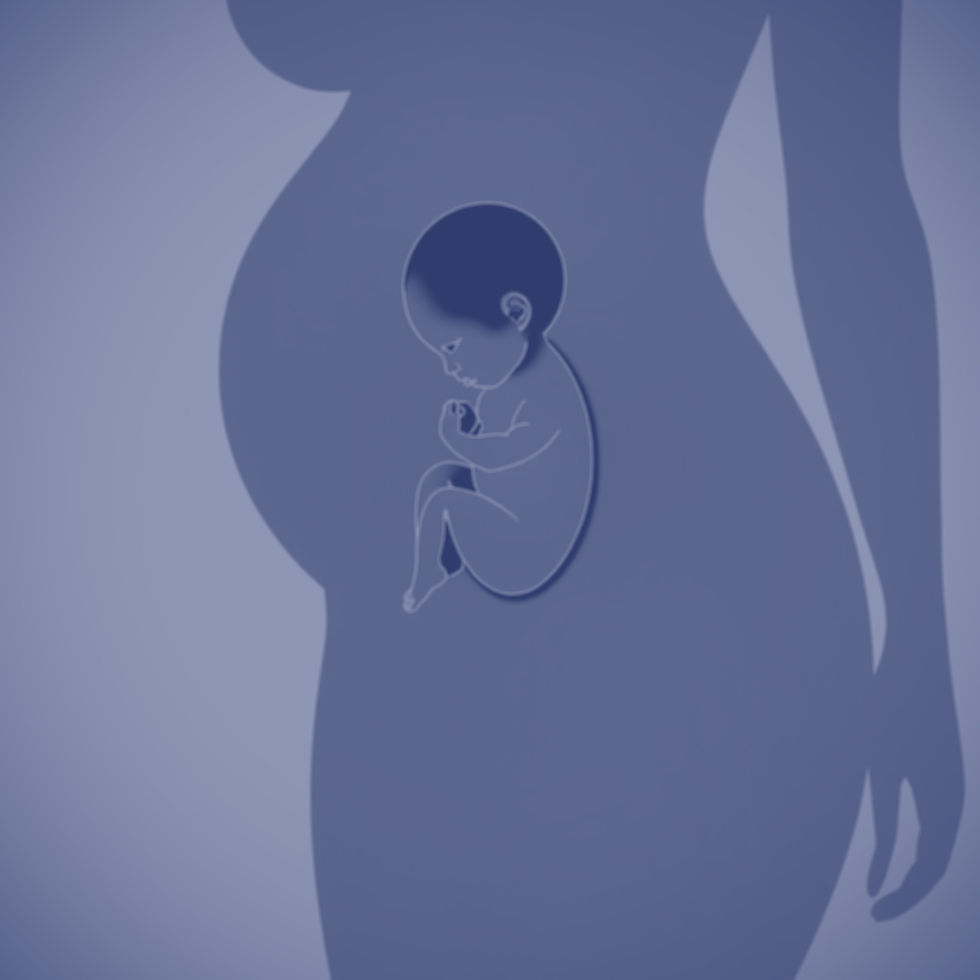Why should my baby get cranial-sacral work?
- denalgold
- Oct 24, 2024
- 3 min read
Cranial-sacral is a category of bodywork that works with the circulatory fluids of the nervous system, the movements of the bones of the cranium (skull), spine, and sacrum, and with the connective tissue of the whole body. This work can benefit anyone, but infants can derive particular benefit because of the work their cranial bones do in both the labor and delivery process.
Many people know babies can be born with cone heads or other interesting shapes (depending on their presentation, but cone is most common). The reason for this is because their skulls aren't sutured, and some bones aren't fused, the way adult skulls and bones are. While we often think of the skull as one contiguous bone, it is actually made up of many parts that are not fused, but in very tight, slightly mobile joints. The eight cranial bones make up what we think of as the skull, the 14 facial bones make up the face, and the mandible (jaw) is the only bone with a highly mobile joint. A baby not only has these bones all separated and mobile, but also has three distinct bones that will fuse into the temporal bone on each side, the two frontals that will fuse into one (the forehead), and four distinct bones that will fuse into the occiput (base of the skull).
As babies begin to enter the pelvis, the cervix, and finally the birth canal, these bones overlap one another to shrink the diameter of the head, and mold it to fit the shape of what it is passing through.
After birth, these bones often will move back towards their expected orientation. However, sometimes something can get stuck. There can be bones that don't fully come out of the overlap from the birth. There can be places where the bones are pushed too close that compress blood vessels and nerves (which can cause symptoms such as digestive upset). There can be places where the skull is flattened that force it to push out elsewhere. Some of these are very obvious and some are more subtle. Some also become more apparent as the baby grows and one part of the skull isn't expanding evenly with the rest.



2 - one week old 3 - three weeks old
1- birth


Progress shots from actual patient (posted with parental permission). Note both the shape of the head, which improves image to image, and the angle of the forehead, which makes slow improvement, but isn't in normal alignment until the final image.
4 - five weeks old 5 - 2.5 months old
What is so exciting about working on infants is that there is so little history in the tissue that things can often release quite readily. Some babies can see big change in 1-2 treatments. In some more extreme cases, there can be change early, but ongoing treatment for the first months can help everything move more smoothly into place.
Another aspect of the birthing process is the primitive reflexes that babies express to assist in the birthing process (these reflexes are present in all babies whether they were born vaginally, by cesarean, or instrument assisted), Babies expressing these reflexes in the birthing process helps to integrate them, so many deliveries can have components that interrupt these reflexes. Also certain presentation can cause one of them to become dominant and oversensitive (i.e. babies with an over-sensitive startle reflex).
Dynamic Body Balancing, which is a particle school of cranial-sacral work, specifically works with unwinding tension in the fascia to. help release tension that might be overactivating those reflexes. There are also simple movement exercises that can help these integrate more easily, so the baby isn't being constantly stimulated into one reflex.
Some indications a baby could benefit from this work:
Head molding that is not returning to an even-round shape within a couple of days after birth (this can include cone shapes, flat back of skull, bulges on either side)
Noticeable bumps on baby's skull, especially ones that are uneven side to side
Digestive discomfort
Overactive reflexes (i.e. sensitive startle reflex)
Difficulty sleeping
Instrument-assisted delivery
Nervous system symptoms
Torticollis - that is baby rotating head more easily to one side than the other.
Difficulty in car seats
Difficulty breast feeding on one side


Comments